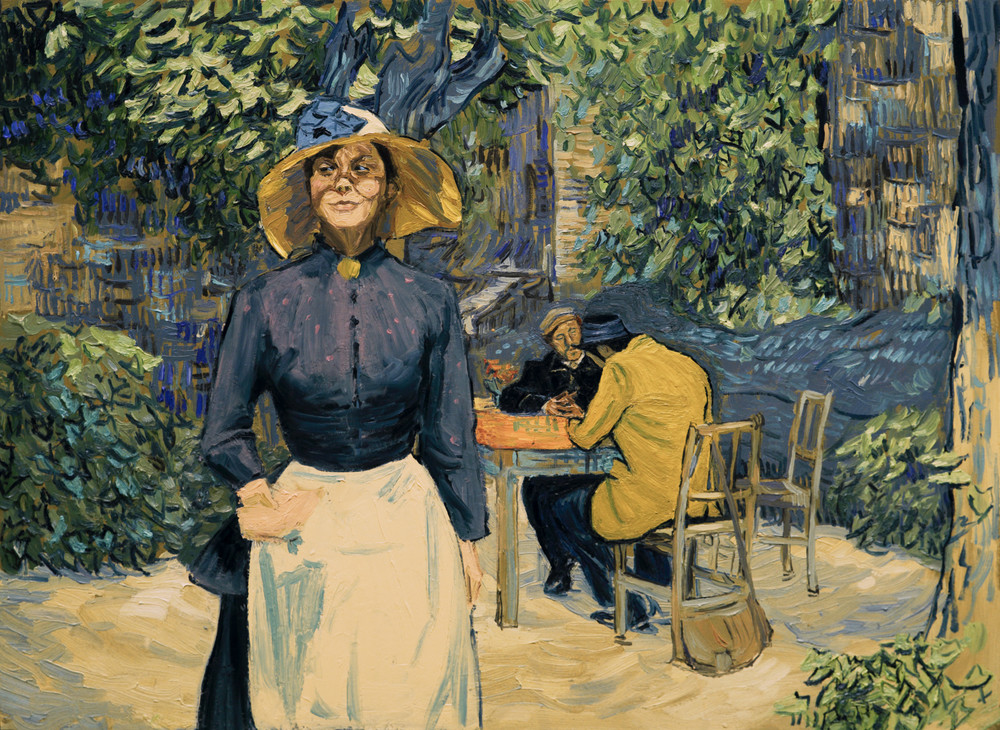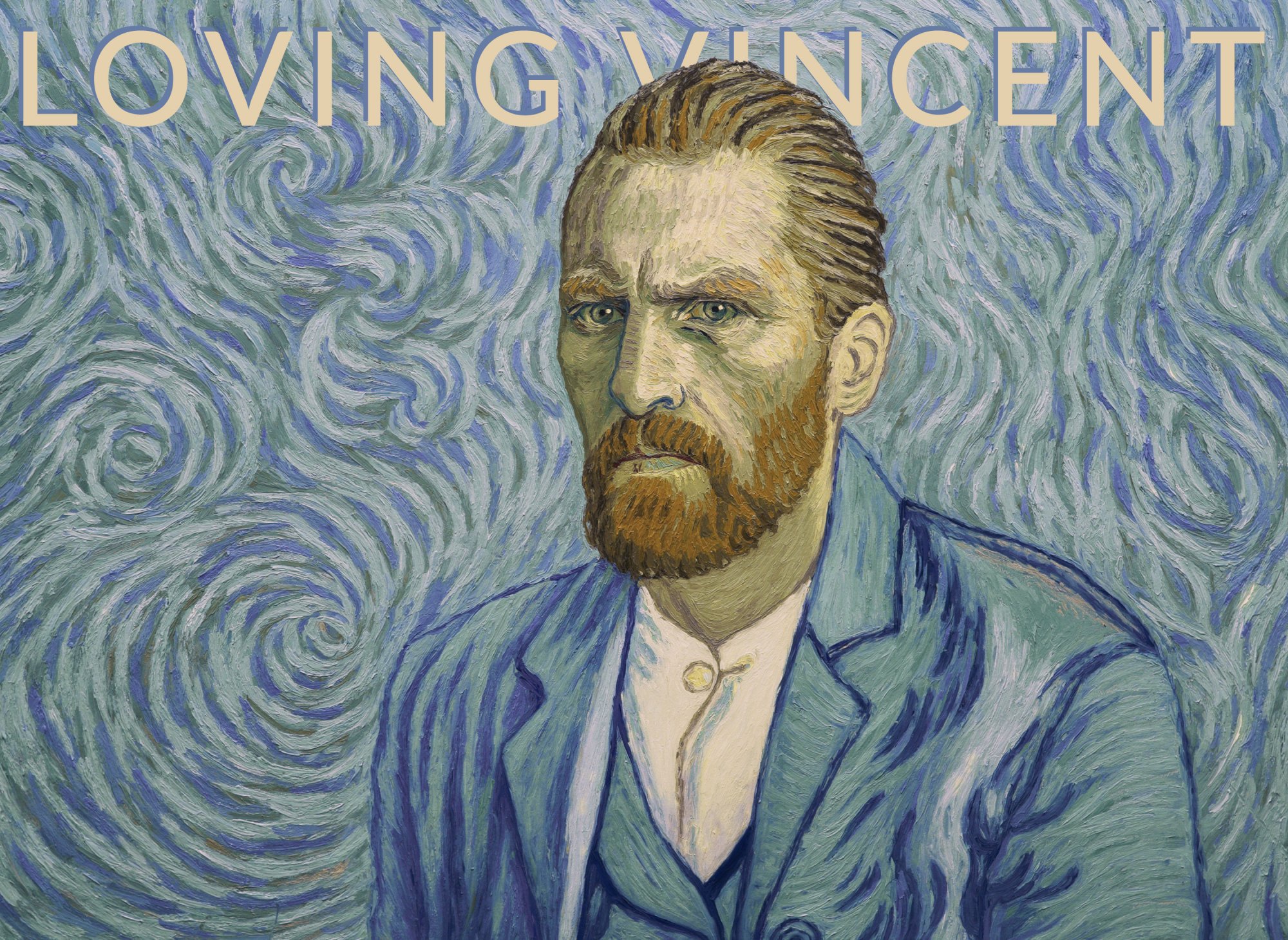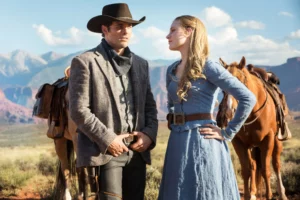“There may be a great fire in our hearts, yet no one ever comes to warm himself at it, and the passers-by see only a wisp of smoke, outside the chimney and they go ahead.” Vincent Van Gogh.
A lot of people know and love the artistic career of the most famous Post-Impressionist exponent, from bright and shiny colors to love of nature in his paintings, but few look at his masterpieces considering the cruel and desolate life of survival of Vincent Van Gogh.
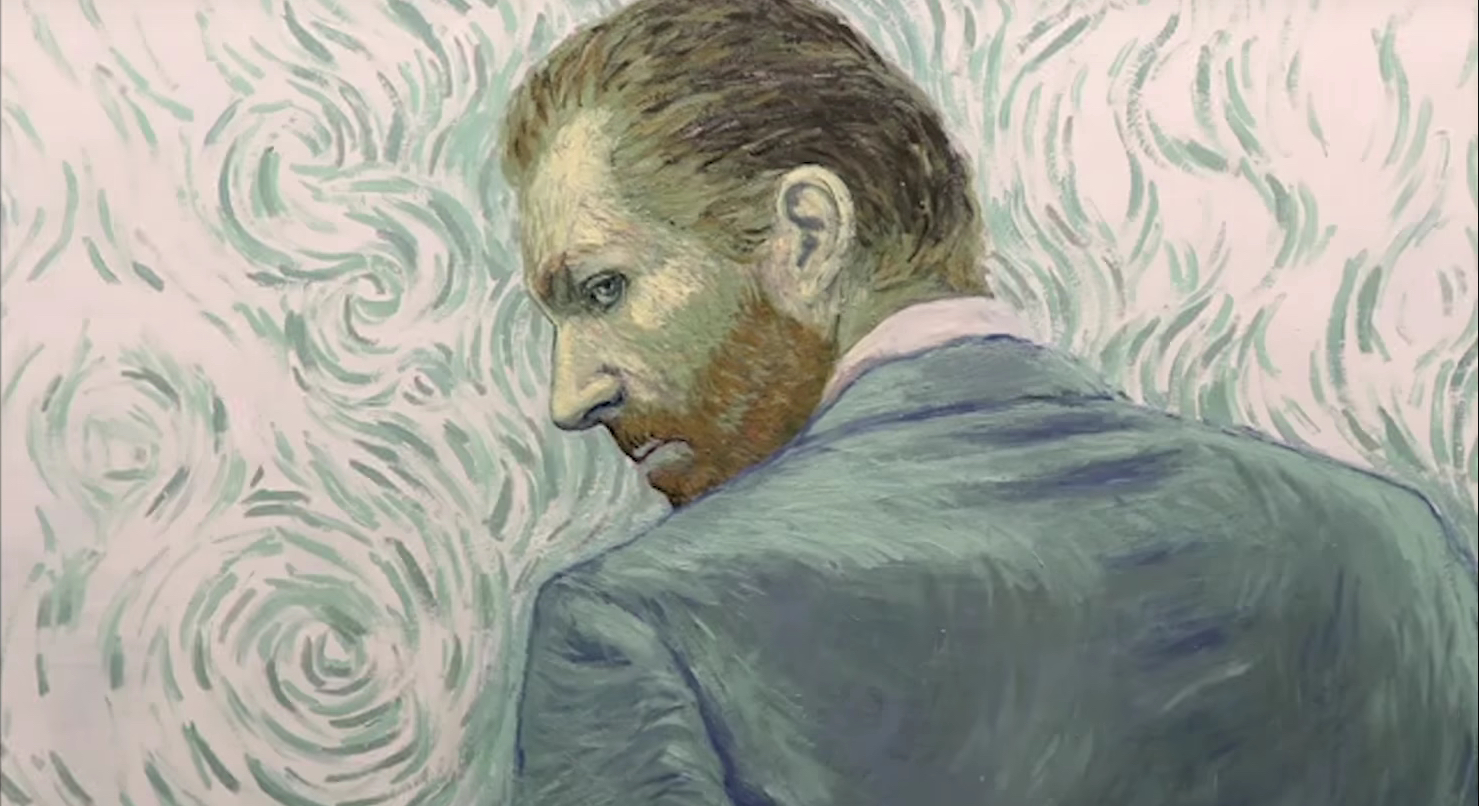
A man before the genius; an artist who never wanted to belong to any movement, but simply to paint his anguish and, while painting, to find peace. Over twenty years the brush of Vicent Van Gogh traveled from the bleak and rustic Holland to Paris where he met the sheen of Impressionism and the Japanese Paints, until Arlès in Provence, the cradle of some of his outstanding landscapes. After the tough cohabitation with Paul Gauguin and the following recovery in a mental hospital, he decided to move to Auvers-sur-Oise – a village that would inspire and lead him to paint a picture a day, between gardens, wheat fields and the vivid faces of some of its inhabitants, working as a background for the very last days of his life.
“Now, I just want to come back“ (on July 27, 1890, Van Gogh to Doctor Gachet after his attempted suicide)
The movie -Loving Vincent- is precisely the artist’s comeback, who, thanks to his painting, never left that world which he loved, but that made him hurt even more. A cinematic comeback in which Van Gogh’s masterpieces relive in every single movie’s screen-grab, by transmitting the emotions of those works belonging to his last days in Auvers-sur-Oise.
Loving Vincent, directed by Dorota Kobiela and Hugh Welchman, is defined as an ‘animation crime movie’. Behind the purity of colors typical of this young painter, the movie follows the enigmatic strand of “ Who did it?” exactly like a classical detective story, looking into the possible causes and ‘architects‘ of the genius’ death. In 1891, one year after Van Gogh’s death, Armand Roulin, son of an old postman and Vincent’s friend, was entrusted by his father to deliver to Theò Van Gogh, the beloved brother, a letter written by the painter before he passed away: that may have contained the real reasons for his untimely death.
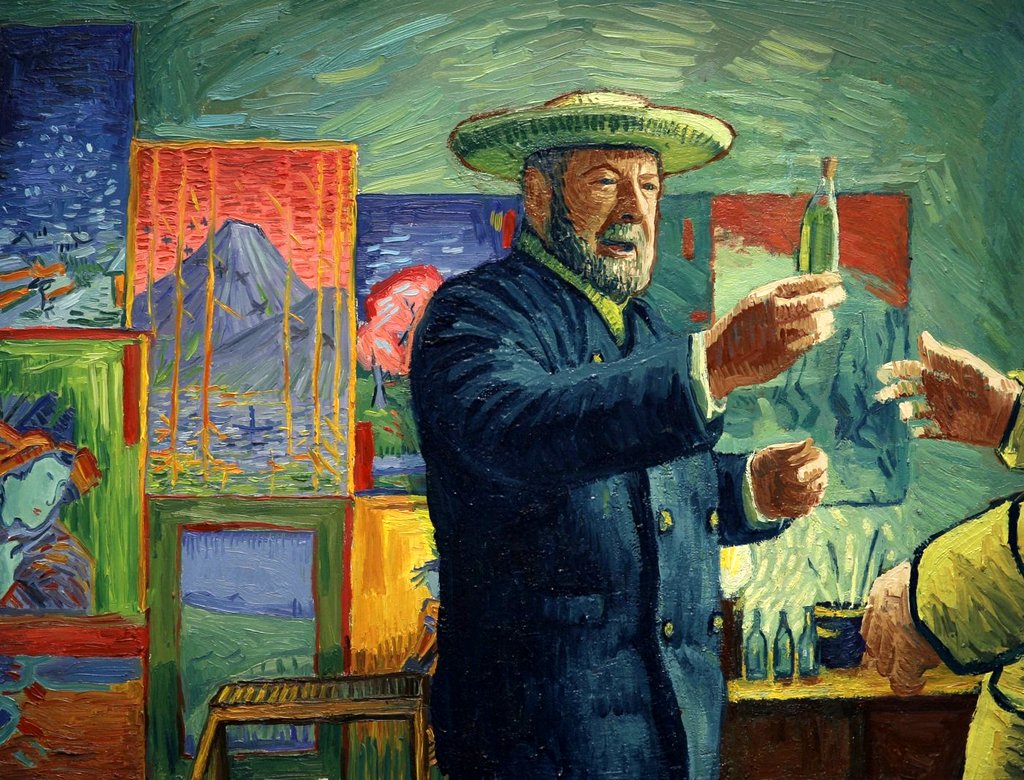
Although to some the painter’s biography and consequently his death are well-known facts, the movie is able to immerse the audience into a pale storytelling, but rich in intrigue and curiosity and, together with the young Armand, the audience tries to unravel the mystery behind the passing of one of the most famous modern painters. It’s a mystery that expresses itself in the movie’s avant-garde animation, so as to make it unique and brand-new to the eyes of both typical viewers and the most devoted film-lovers.
A drama told through 60.000 paintings and the enormous work of a group of talented painters who, starting from 94 Van Gogh’s pictures, traced frame by frame every Take as if they wanted to paint a coloring book, but setting the magnificently reproduced style of Vincent Van Gogh. It’s like looking at one of his painting ‘on the move‘, bind together and immerse in another painting or landscapes. Looking at life like Van Gogh did, Loving Vincent is a dream come true; a dream of looking at “The Starry Night” (1889) coming alive and the people walking the streets at nighttime, the flight of ravens that moves ‘truly’ fluttering ears of grains (1890) and walking in the quiet “The Night Cafe”(1888).
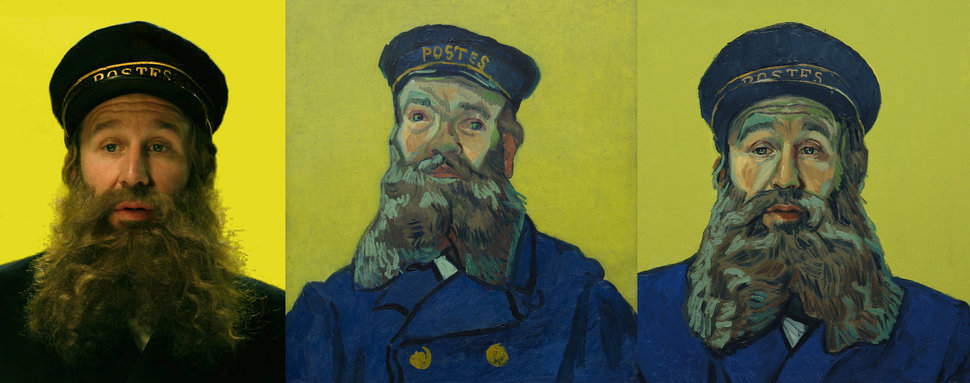
“But I prefer painting people’s eyes to cathedrals, for there is something in the eyes that is not in the cathedral, however solemn and imposing the latter may be“.
Besides the ability of the painters, that made the movie an authentic and veritable painting on a canvas, the huge project succeeded also on the cast, chosen to closely resemble the faces of those who were the real subjects of Van Gogh’s works and witnesses of that sad last part of his life.
Newcomers actors and actresses, not for nothing of theatrical formation, such as the fresh Saoirse Ronan (Lady Bird, The Lovely Bones) and Jerome Flynn, the mercenary Bronn from Game of Thrones, who besides his appreciable performance, has a remarkable and particular gestural expressiveness that makes him so alike to Doctor Gachet, Van Gogh’s therapist and his trusty confident during the painter’s Auvers-sur-Oise’s permanence. It’s this so detailed reproduction, or better, ‘transformation‘ of these Hollywood star’s faces into the subjects of some of Van Gogh’s painting that gives even more intensity to the film, that has been nominated at the Golden Globes in the Best Motion Picture (Animated) category.
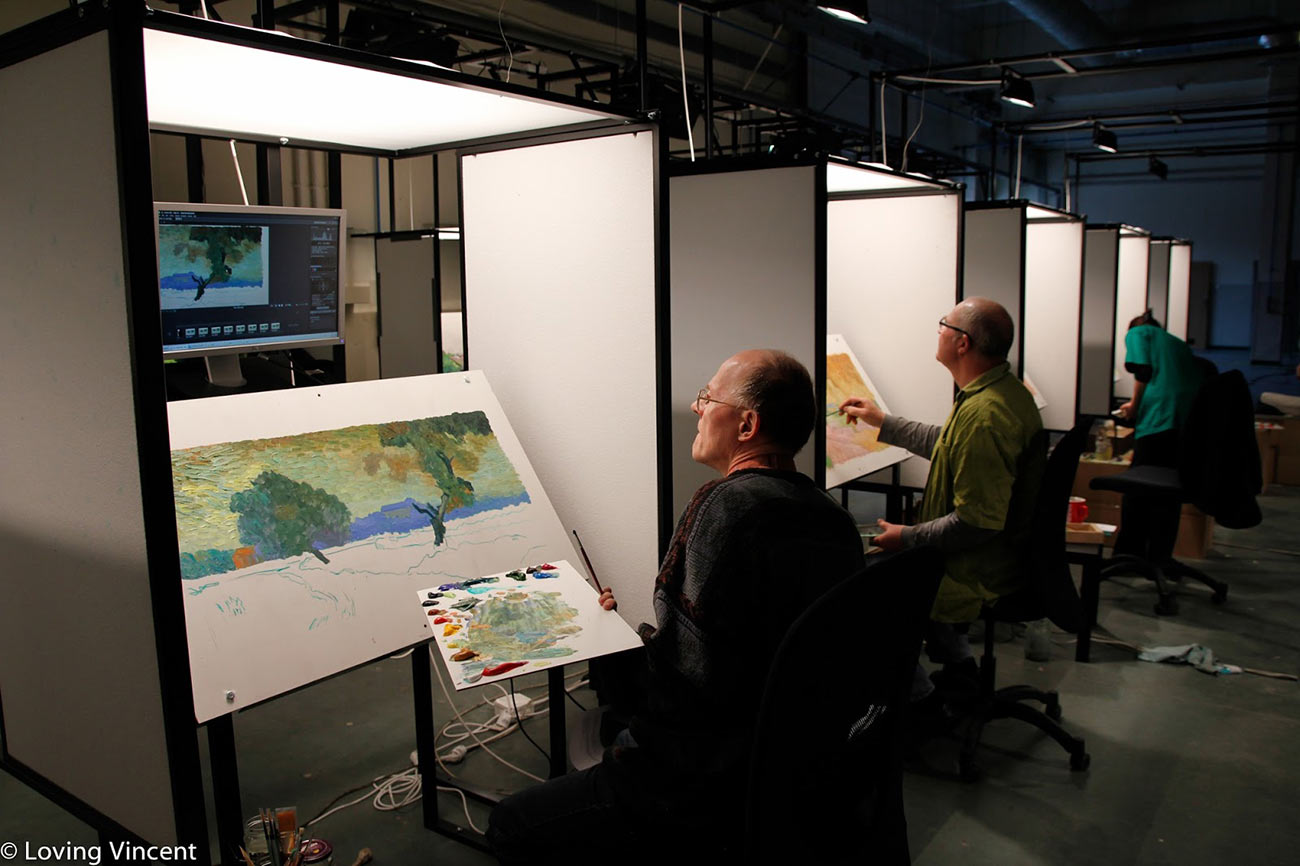
“I can’t change the fact that my paintings don’t sell. But the time will come when people will recognize that they are worth more than the value of the paints used in the picture.” A movie started out in life as simple short-documentary that moves by alternating moments of the genius’ life, seen it in kind of flashbacks, with the fictional pursuit of truth carried out by the young Armand and through some of the characters close to Van Gogh.
Vincent, a man who wished only to be loved and to love with the same passion he painted every day his masterpieces. His escape from the ever-present “don’ts of life, from prejudices of a brutish population who knew nothing about his prodigy, but as many, even today, couldn’t get over the image of a troubled guy, crazy enough to cut off his ear. Loving Vincent fights the prejudice, honors the man before the artist; a man who chased desperately the happiness and normality that he so badly wanted.
